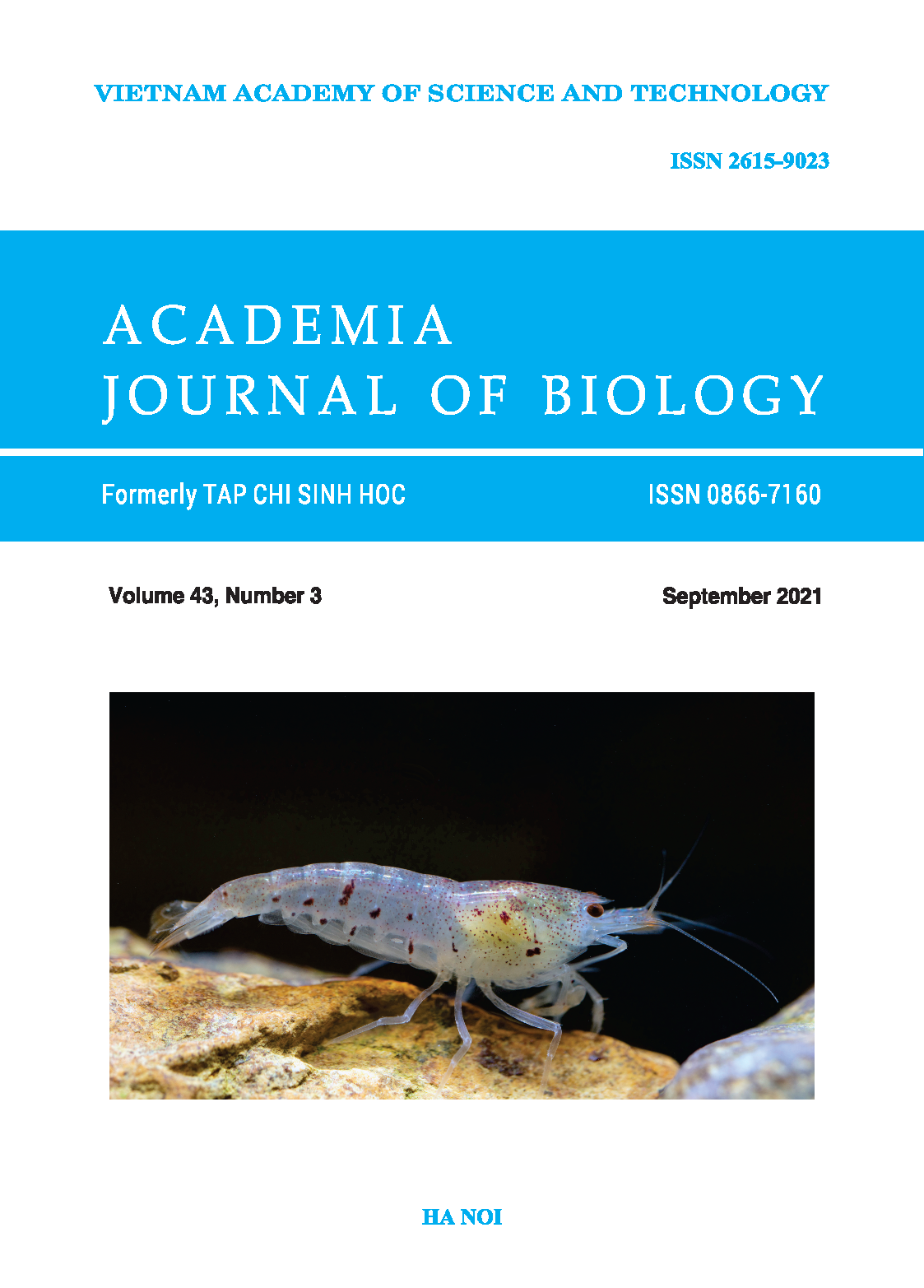\(\textit{rbc}\)L DNA region revealed as the best DNA barcode for identification of \(\textit{Mahonia}\) and \(\textit{Berberis}\) species (Berberidaceae)
Authors
DOI: https://doi.org/10.15625/2615-9023/15888Keywords:
Berberidaceae, ITS2, rbcL, trnH-psbA, selection of candidate DNA markers.References
Ban Nguyen Tien, 2003. List of plant species in Vietnam. Volume 2. Agricultural Publishing House, Hanoi.
CBOL Plant Working Group, 2009. A DNA barcoding for land plants. PNAS, 106(31): 12794–12797.
Chen S., Hui Y., Jianping H., Chang L., Jingyuan S., Linchun S., Yingjie Z., Xinye M., Ting C., Xiaohui P., Kun L., Ying L., Xiaocheng J., Yulin L., Christine L., 2010. Validation of the ITS2 region as a novel DNA barcode for identifying medicinal plant species, PLoS One, 5(1): e8613.
Cheng T., Chao X., Li L., Changchao L., Yu Z. and Shilian Z., 2016. Barcoding the kingdom plantae: new PCR primer for ITS region of plants with improved universality and specificity. Molecular Ecology Resources, 16: 138–149.
Chromas Pro2.1.6. https://chromas.software. informer.com/download/.
Doyle J. J., Doyle J. L., 1990. Isolation of plant DNA from fresh tissue. Focus, 12: 13–15.
He J. M., Mu Q., 2015. The medicinal uses of the genus Mahonia in traditional Chinese medicine: An ethnopharmacological, Phytochemical and pharmarcological review. J. Ethnopharmacol, 175: 668–683.
Kress W. John, Kenneth J. Wurdack, Elizabeth A. Zimmer, Lee A. Weigt, and Daniel H. Janzen, 2005. Use of DNA barcodes to identify flowering plants. Proceedings of the National Academy of Sciences, 102(23): 8369–74.
Kumar S., Stecher G., Tamura K., 2016. MEGA7: Molecular evolutionary genetics analysis version 7.0 for bigger datasets, Molecular Biology and Evolution, 33(7): 1870–1874.
Lahaye R., van der Bank M., Bogarin D., Warner J., Pupulin F., Gigot G., Maurin O., Duthoit S. Barraclough T.G., Savolainen V., 2008. DNA barcoding the floras of biodiversity hotspots, Proceedings of the National Academy of Sciences of the United States of America, 105: 2923–2928.
Liu J., Provan J., Gao L. M., Li D. Z., 2012. Sampling strategy and potential utility of indels for DNA barcoding of closely related plant species: A case study in taxus, International Journal of Molecular Sciences, 13: 8740–8751.
Muellner A. N., Schaefer H., Lahaye R., 2011, Evaluation of candidate DNA barcoding loci for economically important timber species of the mahogany family (Meliaceae). Molecular Ecology Resources, 11(3): 450–460.
Nguyen Thi Phuong Trang, N. M. Duc, N. V. Sinh, Triest L., 2015. Applictaion of DNA barcoding markers for identification of Hopea species. Genetic Molecular Research (GMR) 14(3): 9181–9190.
Stoeckle M. Y., Catherine C., Gamble R., Kirpekar G. Y., Selena A., Damon P. L., 2011. Commercial teas highlight plant DNA barcode identification successes and obstacles. Nature Research Journal, 1(42): 1–7
Song X., Ting S., Wenjie L., Xiaopeng N. Shahid I., Zhaojun N., Xiao H., Dan Y., Zhijun S. And Zhihong G., 2019. Comparative analysis of the complete chloroplast genome among Prunus mume, P. armeniaca, and P. salicina. Horticulture Research, 6(89): 2–13.
Young Dong Kim, Robert K. Jansen, 1996. Phylogenetic implications of rbcL and ITS sequence variation in the Berberidaceae. Systematic Botany vol 21(1): 381–396.
Young Dong Kim, Sung Hee Kim, Chul Hwan Kim, Robert K. Jansen, 2004. Phylogeny of Berberdaceae based on sequences of the chloroplast gene ndhF. Biochemistry Systematics and Ecology, 32: 291–301.
Vietnam Ministry of Sciences and Technology, 2007. Vietnam Red Book Part II - Plants. Natural Science and Technology Pub., Hanoi.
Downloads
Metrics
Downloads
PDF Downloaded: 85





